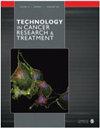Clinical and Radiological Factors for Predicting Clinically Significant Prostate Cancer in Biopsy-Naive Patients With PI-RADS 3 Lesions
IF 2.8
4区 医学
Q3 ONCOLOGY
引用次数: 0
Abstract
ObjectiveThis study intends to examine the anticipatory power of clinical and radiological parameters in detecting clinically significant prostate cancer in patients demonstrating Prostate Imaging Reporting and Data System 3 lesions.MethodsThis was a retrospective study. The study included participation from 453 patients at the First Affiliated Hospital of Soochow University, sampled between September 2017 through August 2022. Each patient underwent a routine 12-core prostate biopsy followed by a 2 to 5 core fusion-targeted biopsy. We utilized both univariate and multivariate logistic regression analyses to identify the parameters that have a correlation with clinically significant prostate cancer. The predictive ability of these parameters was assessed using the receiver operating characteristic curve, leading to the creation of a nomogram.ResultsClinically significant prostate cancer was detected in 68 out of 453 patients with Prostate Imaging Reporting and Data System 3 lesions (15.01%). Among Prostate Imaging Reporting and Data System 3a and 3b patients, 4.78% (3.09% of the total) and 33.75% (11.92% of the total), respectively, had clinically significant prostate cancer. Systematic biopsy improved prostate cancer and clinically significant prostate cancer detection rates by 7.72% and 3.09%, respectively, compared to targeted biopsy. Without systematic biopsy, there would be an undetected rate of 15% for prostate cancer and 8.13% for clinically significant prostate cancer in Prostate Imaging Reporting and Data System 3b patients. Several clinical parameters, including age, prostate-specific antigen density, lesion volume, apparent diffusion coefficient, and digital rectal examination, were statistically significant in the logistic regression analysis for clinically significant prostate cancer. The individual diagnostic accuracies of these parameters for clinically significant prostate cancer were 0.648, 0.645, 0.75, 0.763, and 0.7, respectively, but their combined accuracy improved to 0.866. A well-fit nomogram based on the identified risk factors was constructed (χ用于预测有 PI-RADS 3 病变的无活检患者中具有临床意义的前列腺癌的临床和放射学因素
目的本研究旨在探讨临床和放射学参数在发现前列腺影像报告和数据系统3病变患者中具有临床意义的前列腺癌的预测能力。研究纳入了苏州大学附属第一医院453名患者的参与,抽样时间为2017年9月至2022年8月。每位患者都接受了常规的 12 核前列腺活检,然后进行了 2 至 5 核融合靶向活检。我们利用单变量和多变量逻辑回归分析来确定与临床上显著的前列腺癌相关的参数。结果在 453 例前列腺成像报告和数据系统 3 病变患者中,有 68 例(15.01%)发现了有临床意义的前列腺癌。在前列腺成像报告和数据系统 3a 和 3b 患者中,分别有 4.78% (占总人数的 3.09%)和 33.75% (占总人数的 11.92%)的患者患有有临床意义的前列腺癌。与靶向活检相比,系统性活检将前列腺癌和有临床意义的前列腺癌检出率分别提高了 7.72% 和 3.09%。如果不进行系统性活检,前列腺成像报告和数据系统3b患者的前列腺癌未检出率为15%,有临床意义的前列腺癌未检出率为8.13%。一些临床参数,包括年龄、前列腺特异性抗原密度、病变体积、表观弥散系数和数字直肠检查,在临床重大前列腺癌的逻辑回归分析中具有统计学意义。这些参数对有临床意义的前列腺癌的单项诊断准确率分别为 0.648、0.645、0.75、0.763 和 0.7,但它们的综合准确率提高到 0.866。结论在前列腺成像报告和数据系统 3(Prostate Imaging Reporting and Data System 3)病变患者中,年龄、前列腺特异性抗原密度、病变体积、表观弥散系数和数字直肠检查的组合比任何单一参数对有临床意义的前列腺癌具有更高的诊断价值。对于前列腺成像报告和数据系统 3 病变的无活检患者来说,系统性活检至关重要,不应被忽视。
本文章由计算机程序翻译,如有差异,请以英文原文为准。
求助全文
约1分钟内获得全文
求助全文
来源期刊
CiteScore
4.40
自引率
0.00%
发文量
202
审稿时长
2 months
期刊介绍:
Technology in Cancer Research & Treatment (TCRT) is a JCR-ranked, broad-spectrum, open access, peer-reviewed publication whose aim is to provide researchers and clinicians with a platform to share and discuss developments in the prevention, diagnosis, treatment, and monitoring of cancer.

 求助内容:
求助内容: 应助结果提醒方式:
应助结果提醒方式:


